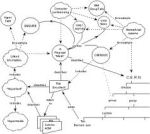 We reward the right answer. Getting the right answer leads to correct decisions and actions. Being accurate and correct is a requirement of success. But sometimes our focus on getting the right answer blocks our discovering the wrong one. Sometimes, these wrong answers reveal weaknesses in our companies before they manifest as lost sales or unhappy customers.
We reward the right answer. Getting the right answer leads to correct decisions and actions. Being accurate and correct is a requirement of success. But sometimes our focus on getting the right answer blocks our discovering the wrong one. Sometimes, these wrong answers reveal weaknesses in our companies before they manifest as lost sales or unhappy customers.
Often, the people we work with are afraid to report information that doesn’t meet expectations. No one wants to be seen as a naysayer or as working against the team. People will bury negative information in details, ignore it or, worst of all, hide it. Yet, it is the information that we don’t expect that many times tell us what we really need to know.
Information designer Edward Tufte famously made the case that the PowerPoint presentations used to discuss the shuttle Columbia foam strike were actually the primary cause of the destruction of the craft on re-entry. Statements minimizing the risk appeared at the top of slides in bigger fonts, with the information, supported by many e-mails and conversations about the danger of returning with tile damage, appearing in smaller fonts at the bottom of slides. The unpleasant facts hid in plain sight and seven lives and a billion dollars were lost. To be clear, the PowerPoint slides only provide evidence of a culture that avoided unexpected or unwanted information.
Understanding that all data, including what you didn’t expect to find, is equal is one of the main lessons from the Columbia shuttle disaster.
If I create an atmosphere in my company where the discussion of positive information is welcomed and the messenger is shot for delivering any negative news, I’ll soon have a pleasant, but failing, enterprise. This gets even worse for when the information is inconclusive, when more study will be needed to understand it. It takes a person of strong character to venture forward with this kind of data. That’s why a culture that promotes that kind of openness is needed.
 Let’s say I use a promotion to lure Baby Boomers to my chain of restaurants and I get the expected uptick in sales. No problem, right? Everyone at table can pat themselves on the back and feel good. But what if the spike in sales came from crowds of Millennials flooding my stores? Since I’m aiming for a completely different generation that buys for different reasons and in different ways, don’t I need to know that bit of information? Couldn’t it have huge impacts on my business, such as my focus on Baby Boomers in the first place?
Let’s say I use a promotion to lure Baby Boomers to my chain of restaurants and I get the expected uptick in sales. No problem, right? Everyone at table can pat themselves on the back and feel good. But what if the spike in sales came from crowds of Millennials flooding my stores? Since I’m aiming for a completely different generation that buys for different reasons and in different ways, don’t I need to know that bit of information? Couldn’t it have huge impacts on my business, such as my focus on Baby Boomers in the first place?
Obviously, this kind of result will mean that I need to evaluate my entire marketing approach. Whom should I really be marketing to? Have I been marketing to the wrong audience while ignoring a more valuable one? It’s easy to see how intimidating delivering this mixed message would be.
A healthy interest in unexpected information is a best practice. Encourage those you work with to be open and direct about all of the information they gather. Make sure they report everything that is significant, not just whether an objective was, or was not, met. Temper your reactions: Don’t over praise news you expected, don’t over react to what you did not. Seek instead to understand what the information means. Does it illuminate a random situation or a flaw in your planning or systems?
Becoming impartial to information means you can see more of the big picture. Shedding biases and expectations can help you derive more value from the information you’re gathering. Being as open as possible to the facts, clues and hunches that come your way will give you the best possible chance to use life’s circumstances to your advantage.
Recent Comments